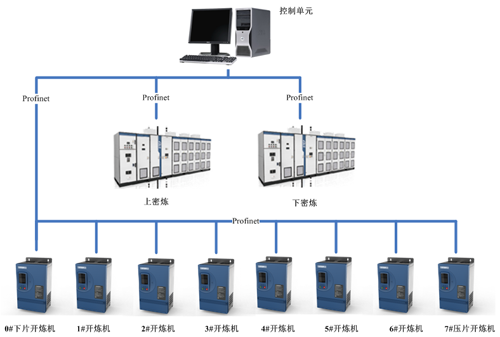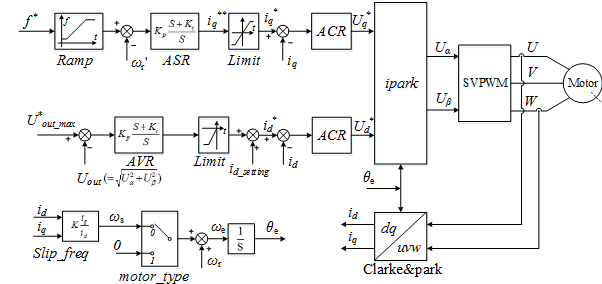Application of ME Series Frequency Converter in Low Temperature Primary Rubber Mixing System
- Views:
- Time of issue:2017-02-24 00:00
Application of ME Series Frequency Converter in Low Temperature Primary Rubber Mixing System
- Views:
- Time of issue:2017-02-24 00:00
Abstract: This article introduces the ME series inverter combined with the low-temperature primary rubber mixing system to realize the automation of the rubber mixing system and improve production efficiency. The technical characteristics of the low-temperature single-stage rubber mixing are described. Introduce the control mode and speed regulation characteristics of ME series frequency converter in rubber mixing process.
Key words: low-temperature primary rubber mixing, ME series frequency converter, open-loop vector control
Overview
The rubber mixing process is a major power consumer in the entire tire production. Improving the rubber mixing efficiency and reducing the energy consumption of rubber mixing has always been an important subject of industry research. The low-temperature one-step rubber mixing technology changes the traditional multi-stage mixing technology into a one-stage mixing technology. This technology realizes the continuous production of mixing, obtains the final rubber mixing at one time, has a high degree of automation and high production efficiency; reduces the number of operators, and ensures the stable quality of the rubber material. Therefore, the low-temperature primary rubber mixing system has requirements for automatic control and driving. It is also very high.
A large tire factory in Guangdong launched two sets of low-temperature single-stage rubber mixing systems. STEP ME series dedicated inverters became the drive inverters for these two systems due to their specificity, stability, and convenient communication functions.
Process introduction
Low-temperature one-step rubber mixing is to put the rubber material discharged from the internal mixer into the 0# rubber mixing unit first, and after a short period of mixing, the rubber material is cooled down and formed into pieces for easy transportation; through the program, it is automatically queued and transported to 1 One of the units of -6#, cooling of the rubber material, mixing, vulcanization, refining, discharging to the sheeting mill output on this unit, and finally cooling and lamination on the film cooling line, Complete the mixing of a car of rubber. In this process, after the rubber material is discharged from the internal mixer, it does not need to go through parking and other processes, but only needs to pass through the open mixer to complete the final refining. The system uses 6 vulcanized rubber mixing units, and through the cooperation of the working rhythm of each unit and the internal mixer, the maximum production capacity is guaranteed.
Product Configuration
3.1 System Driver Diagram
 Figure 1 Driving diagram of the low-temperature primary rubber mixing system
Figure 1 Driving diagram of the low-temperature primary rubber mixing system
The project uses 11 sets of ME series inverters for the low-temperature primary rubber mixing system: 2 sets for internal mixers and 9 sets for open mixers. The system control bus adopts the Profinet communication bus mode, which is more implementable. Profinet, as the bus method of Ethernet, can transmit TCP or IT data at the same time, making factory automation easier to realize.

3.2 Features of the mixer driven by ME500 low-voltage frequency converter
 Figure 2 Block diagram of open-loop vector control
Figure 2 Block diagram of open-loop vector control
1. The ME500 low-voltage inverter adopts advanced motor model control, and the field adopts open-loop vector control, which can quickly respond to sudden load changes and meet the load drive requirements of the mill.
2. Accurate rotor flux linkage directional control capability, fast response and stable operation even when the load torque changes suddenly at 0Hz.
3.0.1s full load acceleration, fast torque response, small speed overshoot, improving production efficiency.
4. Communication bus control, more convenient control, stronger anti-interference ability
To sum up,
ME series special inverters have been successfully used in the low-temperature one-step rubber mixing system. The whole rubber mixing system can save energy by about 10%-15% compared with the traditional DC speed control system, which provides a new direction for the factory's energy saving and emission reduction.

Figure 3-4 On-site commissioning of the inverter cabinet
 Figure 5-6 Process system diagram of tandem internal mixer and single-stage open mixer (0#, 7#)
Figure 5-6 Process system diagram of tandem internal mixer and single-stage open mixer (0#, 7#)
Scan the QR code to read on your phone


